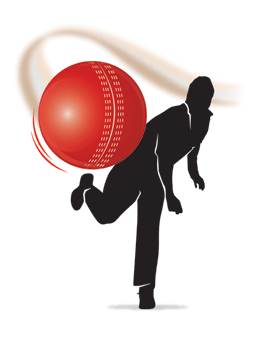|
 Menno Gazendam is author of Spin Bowling Project. Get your free 8 week spin bowling course here Menno Gazendam is author of Spin Bowling Project. Get your free 8 week spin bowling course here
Bowling spin is a passion, and it is fraught with danger at every turn. You can't use pace or intimidation so you need guile and guts.
It's easy to make mistakes on your journey. I know, I have made them, and I have seen others make them too.
If you want to be a superstar spinner, avoid these sins and take a shortcut to success:
1. Not trying to turn the ball
Your a spin bowler, not a slow bowler. So, spin it. If you learn to spin it first you can correct your accuracy later. Spinning hard makes the ball not only turn off the pitch, it makes it drift and dip in the air. Even on flat wickets you need to make the ball fizz out of your fingers.
2. Not having a perfect stock ball
After you spin it, you need to hit your target line and length. And that takes a lot of practice. So much that you should forget about variations until you have the perfect (and dangerous) stock ball.
3. Bowling too straight
You need to get the batter driving. Or at least thinking that a drive is on before it dips, a spins through the gate. You can't do that if you bowl straight all the time.
4. Bowling flatter when getting hit for six
I know, it hurts. The last thing you want is to go for two in a row. So you are tempted to bowl flatter to stop your stock ball going again. But really, you are in the game. A batsman is vulnerable after playing a big shot and you want to tempt him. Toss it up and invite him to do it again. Chances are he will get it wrong and your wicket only cost 6 runs.
5. Not flighting the ball
Flight is a misunderstood term but a crucial skill to master. Tactically it means the batsman moves his head above the eye-line, which makes it harder to pick. The ball travels slower and so turns more, it also drifts and dips more (if you rip it). This makes you into a bowler with 4 ways of deceiving the guy at the other end, not just turn.
6. Not pivoting
Pivoting is the anchor against which you turn your body and generate energy. You cannot turn the ball without this movement timed to perfection. Stay open, smooth and work on it every day until you feel the revs on the ball.
7. Not varying the pace
A batsman loves a bowler who he can line up. Your job is to make sure he never quite knows when the ball is going to arrive. Keep the batsmen guessing by slightly varying your pace in the air. The ball arrives slightly before, or after expected and you have upset the rhythm and timing of the batsman. Frustration for him and wickets for you.
Discuss this article with other subscribers
|

.jpg)




.jpg)


